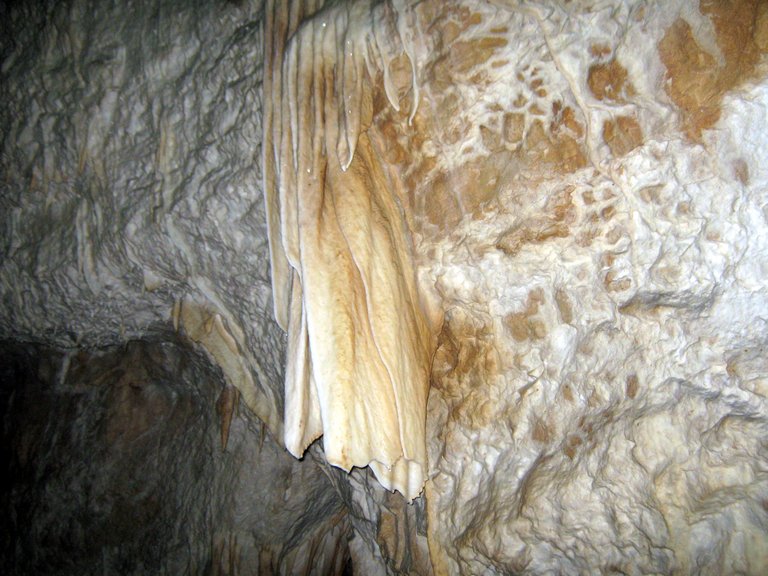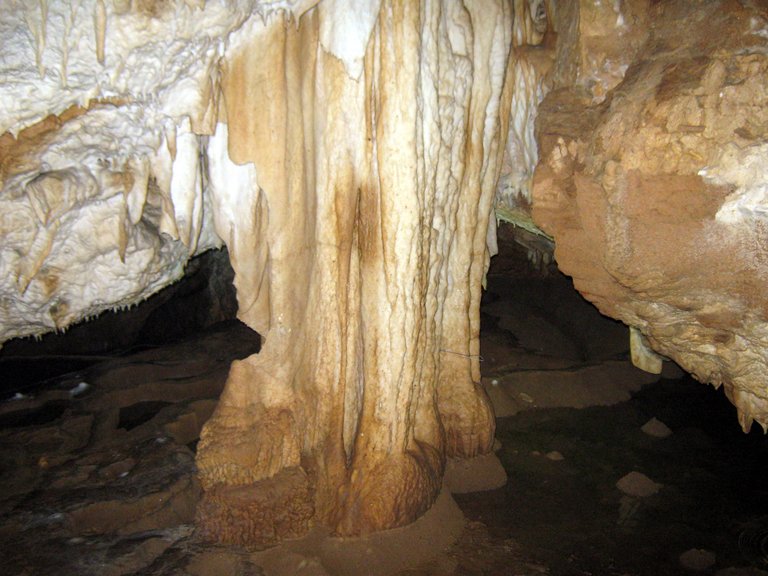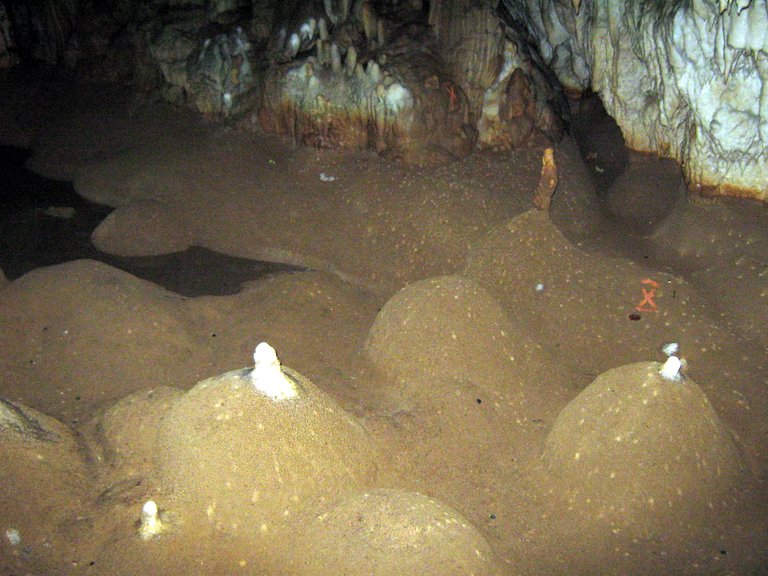
...Go outside... amidst the simple beauty of nature. As longs as this exists, and it certainly always will, I know that then there will always be comfort for every sorrow, whatever the circumstances may be. And I firmly believe that nature brings solace in all troubles. Ana Frank
Following the Danube - Golubac Fortress, Iron Gate and Trajan's Bridge
I will start my story at the place where the Danube River, along its entire course, is the widest, at the entrance to the magnificent Iron Gates. Here, the Danube slowly flows and the opposite bank of the river is 6 km away. At this place you have the impression that you are by the shores of a lake.

In Serbia, along the banks of the Danube there are many Roman fortifications and medieval fortresses. The reason for this is that the Danube during the history was often the border of the great empires.
One of the most beautiful and most interesting is the magnificent medieval Golubac Fortress, built in the 14th century on a steep rocky hill above the Danube river, but it's not known who built this fort. It was owned by Hungarians, Turks and Serbs. Near this fort, there is a rocky island Babakaj (in Turkish babakaj means penitense). With this island fortress is connected with a huge chain, which proves that ship navigation was controlled here.

Reconstruction of this fortress is in progress. The renovation was supposed to be completed, but unfortunately the deadlines were broken. I visited this fortress before the project began. If you are interested in what it looks like now, while restoration is in progress, check out the @lighteye blog with fantastic photos here.

Most of the fort wasn't possible to explore because it was unsafe or inaccessible. We managed to climb into some parts and look from them was incredible.


After the Golubac fortress the Danube flows through the magnificent Iron Gates or Đerdap Gorge, the largest gorge in Europe. In the past, it was difficult for ships to sail through this gorge, because the bottom of the riverbed is covered with pointed walls. In many places there were dangerous vortices and rapids. To navigate the ships, special people were trained to knew exactly where the boat could move. With the construction of the Great Đerdap Dam, the river Danube is calm. This is how the picturesque and tame Đerdap Lake, about 245km2, was created.
When the dam was built, the problems of navigation have been solved, but the water has covered many settlements, natural rarities and historical monuments.

Iron gates is a very complex gorge consisting of several narrowing and enlargement. In the very distant geological past, at the site of the Iron Gates, there was a river connecting the former Pannonian Sea and the Vlach-Pontian Basin, which was also filled with water. According to Jovan Cvijić, when the water level in the Vlach Ponti Basin has fallen, at the site of the Iron Gates the waters of the Pannonian Sea were effluented in the Vlach-Pontian Basin in parallel with the rise of the Carpathian Mountains in this area. In the Ice Age, the Danube merged the lakes that emerged after the disappearance of the Pannonian Sea and inherited the riverbed connecting the former two seas. In short, this is how the Iron Gates originated.


Interesting stories are also hidden on the Romanian side of the Danube, such as the one about the last Dacan king Decibal. Twenty years ago, a wealthy Romanian Josef Konstantin Dragan had funded and realized the idea of carving the image of the last Dacian king Decibal on the limestone cliff above the Danube and the monastery of Mraconni. During the carving of Decibal's face in the wall, the machines were not used. For almost a decade, alpinists have worked this character.

When we talk about Decibel's time, we should mention the famous Roman Emperor Trajan, who defeated him. This famous emperor left many traces in the Iron Gates, building the roads to Dacia.
The architectural wonder of that time was certainly Trajan's Bridge. Unfortunately, this wall, located not far from the town of Kladovo, gives little evidence of the size of that bridge, but the fact that parts of that bridge have survived for centuries speaks of the skills of the builders of that era.

When the Trajan Bridge was completed in the 105th year and a thousand years later, it was the longest bridge of that time. He merged the shores of Upper Moesia and Dacia. Twenty pillars could be seen in the 19th century when the Danube water level was record low. It's interesting that even today the remains of these pillars are at the bottom of the Danube river bed. The remains of the bridge can also be seen on the Romanian side, near the town of Turn Severin.
Natural beauty - karst and greenery
Eastern Serbia is one of the most beautiful parts of Serbia, but tourism is not sufficiently developed in this region. Therefore, this region is mostly visited by true nature lovers, naturalists and those with an adventurous spirit. At this place, you can see at the diverse forms of relief, because entire Eastern Serbia belongs to the transitional form of karst. So, this region is full of caves, sinks, springs, and is also rich in greenery. We visited one source, one stone arch and one cave. Here's the story.
Our path through the woods to the Valja Prerast or Hollow rock, colossal stone arch, was very interesting. We had to figure out how to cross the river several times, so our legs were wet after this tour.

Actually, Valja Prerast is the rest of the former cave. This natural stone bridge was created when the cave ceiling collapsed with erosion, at a greater length. The height of the hole is about 30 m, and the height to the upper edge of the arc is 45 m. Through this gates, the wind constantly blows.


Also, the way to the White Springs was very exciting. Without much effort, gently strolling through the forest, next to the cascade of this short river, we have reached this picturesque source. Water falls from a height of 16 meters over the hollow tufa - variety of limestone.
According to the legend, around these magic springs and the cave below the waterfall, they gathered and danced fairies, dressed in beautiful white dresses. Slovenian mythology is full of these stories, and villas simply adore such incredible places.



Our next destination was Rajko's Cave, one of the most beautiful in the Balkan Peninsula. A very interesting guide told us about the legend of the hajduk Rajko and his treasure that he had stolen from the Turks and hid in this cave. This treasure has never been found, but for some people there is still hope that they can be fortified overnight, so even today Rajko's cave is the target of the robber.
In fact, the real treasure of this cave is rich cave jewelry made of pure white calcite. Length of the hallway of Rajko's Cave are about two kilometers long. The trail leads from the hall to the hall, next to the beautiful limestone formations, which have very vivid names - Concert and Hedgehog Hall, Small and Large Organ, Ghosts, Waterfalls Hall, Winter Fairy, Crystal Hall ...





Nature can be humorous, so in this cave there is this unusual formation - Girls' breasts, which represent the beginning of the formation of stalagmites.

Charcoal, gold and copper
Barbecue is very popular in Serbia. If you want a tasty barbecue you must have a high quality charcoal, because it gives a lot of heat with a little smoke and flame. It's a fact that Serbs eat a lot of grilled meat, so I suppose that the consumption of charcoal is enormous. The charcoal is made by decomposing different types of wood in special furnaces. There are many such furnaces in Eastern Serbia. Here's one on Miroč Mountain. Otherwise, this dog was very aggressive, so we could not get closer.

East Serbia had a turbulent and very interesting geological past, so this area is very rich in various ores. Mining in these parts was developed at the time of the Romans. Some rivers, such as Timok and Pek, contain gold in their sandy deposits. The tradition of gold mining from the sand deposits of these rivers is long. Today rivers don't have gold as before, but there are still those who have a hobby to find this noble material.
Eastern Serbia is rich in copper ore. Here we are near open pit mine „South Mining District”, located near the town of Majdanpek. By the end of 2010 the following production was recorded in the „South Mining District“: Ore - 331.108.859 t, waste - 776.697.772 t, total production - 1.107.806.631 t. (source)


Here we are at the end of my adventure. Soon I'll take you to some new interesting places.
In the meantime, enjoy, and if you can travel somewhere, it doesn't have to be far or expensive, explore your environment and the beauty of nature that surrounds you.
With love,
Snežana

Thank you very much for the mention, my dear @ladysnowhite :)
You're welcome @lighteye :) Your post and photos certainly deserve it :)
Congratulations, Your Post Has Been Added To The Steemit Worldmap!
Author link: http://steemitworldmap.com?author=ladysnowhite
Post link: http://steemitworldmap.com?post=explore-the-beauty-of-eastern-serbia-with-me
Want to have your post on the map too?
Bravo @ladysnowhite, obozavam ova tvoja putovanja kroz ovu nasu prelepu zemlju..e kako bi ovo sve moglo da izgleda..i da cela zemlja zivi od turizma, spomenika i istorije...tuga jedna me uhvati svaki put ...
Hvala @jungwatercolor. Na žalost u pravu si. Na primer, kada smo se raspitivali za Fetislam u Kladovu su nam rekli da ne idemo tamo, nije pokošeno i puno je zmija, o rekonstrukciji Golubačkog grada i probijanju roka možeš da nađeš na netu, ali bolje nemoj iznerviraćeš se, a Trajanov most smo jedva našli jer nije vidno bilo obeleženo skretanje sa glavnog puta, putokaz postoji, ali neki mali i tako dalje i tako dalje. Ali ni ove gluposti nam nisu pokvarile putovanje. Baš smo uživali.
Istocna Srbija je stvarno prelepa :)
Istina :) Ovo je samo jedan njen deo. Mada mi ni blog nije skroz potpun, svraćali smo još na neka mesta, ali o tome neki drugi put :)
This is an excellent, very well written and very informative post. I hope it will reach a bigger audience because these beauties of Serbia should be seen. Thank you again for this beautiful experience!
I'm glad you like my reportage @dejan.vuckovic, especially since I know how much you love this part of Serbia. This region deserves promotion because it is truly unique. Thank you:)
Agree, there are too many places in Serbia which are almost completely unknown, but beautiful as most known tourist destinations in the world. Thank you for sharing them with the community!
Unfortunately this is a sad truth about our country. Otherwise, I enjoy writing about these places, the same as I like to visit them.
Hiya, just swinging by to let you know that this post made the Honorable Mentions list in today's Travel Digest!
I'm honored, thank you :)
Najbolji putopis iz tog dela Srbije!
Hvala @yu-stem. Ako u sadržaju vašeg magazina ima mesta za putopise, tu sam :) Pozdrav!
Zamišeno je da imamo sadržaje iz Science, Technology, Engineering i Mathematics na našem jeziku. Ako bi tekst bio o recimo etnologiji, sa referencama - zašto da ne :)
Da li se u vašu koncepciju uklapaju priče o velikim geografskim otkrićima ili recimo o nekim oblastima na zemlji, poput Sahare, Amazonije, teme o vetrovima, pustinjama i slično? Uz reference, naravno :)
Ako je sa referencama i ima neki naučni ili naučno-popularni doprinost - moguće. Tipa, Ivo Visin, nešto tehničkih karakteristika broda, navigacija sekstantom, kartografija tog doba...
Bravo, sjajan i inspirativan tekst
Hvala ti @hummingbird72, drago mi je da ti se dopada!
Hey Snezana, the fortress between those mountains is amazing. great post.
Thanks @ivansnz. I hope the reconstruction of the fortress will be over soon.
Šta da kažem nego savršen post! 😚
Hvala ti Mico na divnim rečima :)
Wow! This is amazing! I had no idea Serbia is this beautiful! Thank you for the insight.
Serbia has a beautiful nature, but poorly commercialized, which is necessary for mass tourism. Thanks for the comment and welcome, we are not far away:) Greeting! :)